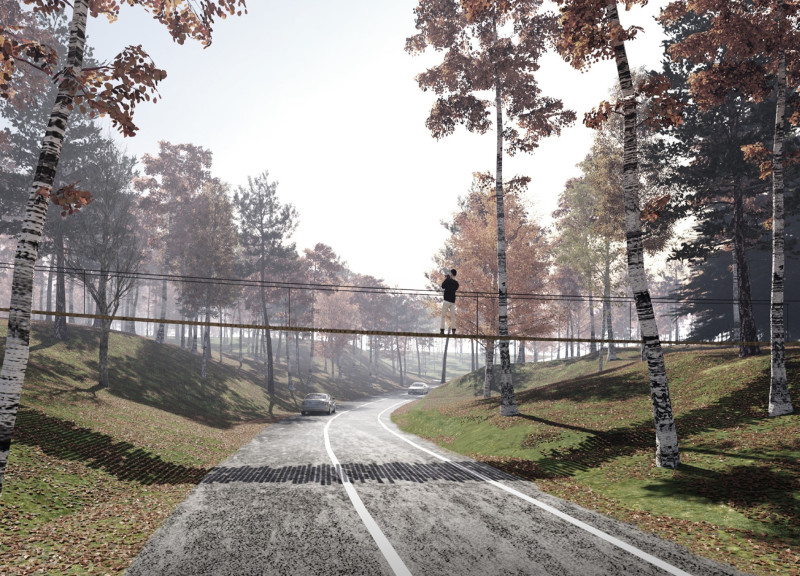5 key facts about this project
Yarn Bifröst is located in Gauja National Park in Latvia. The bridge provides a crossing for pedestrians and vehicles while integrating smoothly with the landscape. Designed to create light phenomena, it features a porous form that produces textured patterns similar to those found beneath tree canopies. The goal is to connect the natural environment and the built structure, encouraging a feeling of continuity and harmony.
Design Concept and Structural Form
The design uses the changes in the land's height to reveal the bridge gradually. This approach avoids an overwhelming presence in the landscape. Instead, it casts shadows that connect the built structure with the natural surroundings. For pedestrians, walking across the bridge becomes part of the natural experience, as if they are moving through the woods.
Materiality and Cultural Context
The choice of materials is tied to local culture. Wooden elements reflect traditional Latvian architecture and may utilize timber sourced from local forests. This supports sustainability while grounding the design in its regional context. Corten steel is used in parts of the structure, providing strength and stability. This material choice allows the bridge to handle the loads while maintaining its functionality.
Light and Shadow Play
A key feature of the bridge is its perforated surface, which lets sunlight filter through. This creates interesting shadow patterns underneath the bridge, enhancing the visual experience for visitors. As the light changes throughout the day, so too does the space beneath the bridge, adding depth to the crossing and inviting people to pause and observe their surroundings.
Texture and Interaction
The smaller components that make up the bridge work together to create a unified form. This thoughtful design ensures that the structure can support weight while being visually appealing. People moving across the bridge interact with its textures, connecting them to the experience of crossing. The structure stands out in the landscape, yet it does not overshadow the natural beauty of the park.


























